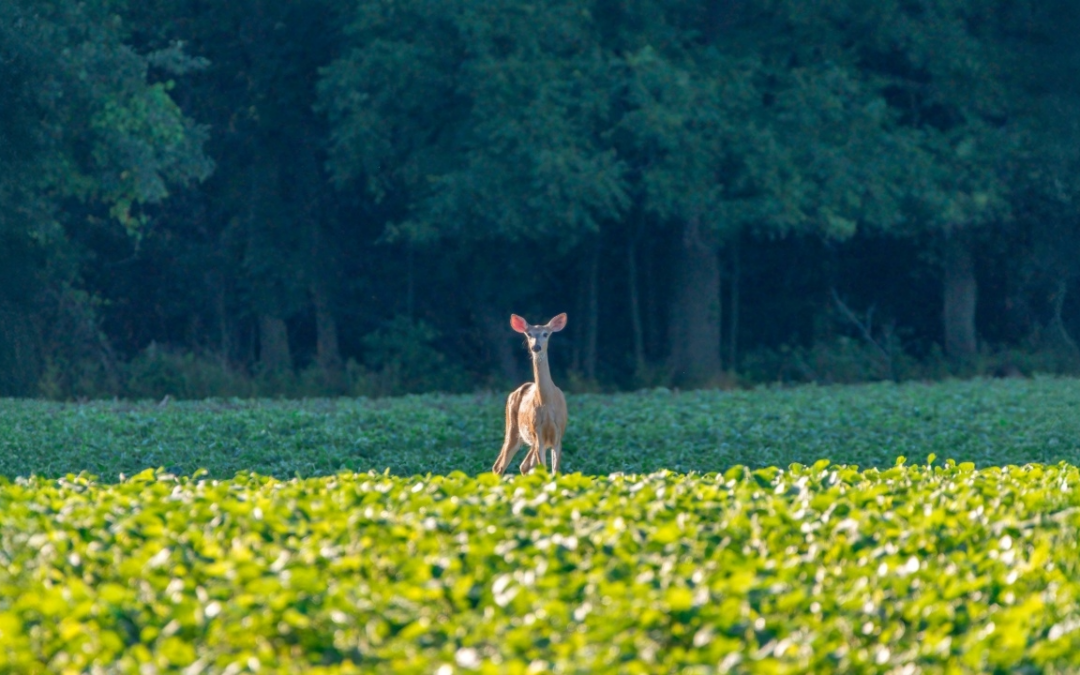by PAUL HOLLIS
Alabama farmers now have new options available when it comes to sampling their soils, including a Soil Quality Index (SQI) and technology that allows for grid sampling.
Charles Mitchell, a professor in the College of Agriculture Crop, Soil and Environmental Sciences Department and an Alabama Extension agronomist, explained that the Alabama Soil Quality Index, or SQI—the first of its kind in the South—is a new measurement of soil health that should help Alabama farmers improve production and conserve natural resources.
“For 60 or 70 years now, we’ve been throwing fertilizer and lime on the soil, trying to help farmers get by on some pretty darn poor soils,” Mitchell said. “We thought we needed to do something to change that, so we came up with the Alabama Soil Quality Index.”
A previous survey of central Alabama cotton fields revealed that organic matter in the state’s soils was almost nonexistent.
“In other parts of the world, our soils wouldn’t even be considered soils; they’d be considered simply ‘dirt,’” Mitchell said. “By definition, soil must have organic matter.”
The “Old Rotation” (circa 1896) experimental field on the Auburn University campus has shown that soils with less than 2 percent of organic matter don’t have a high yield potential, said Mitchell. And while the Old Rotation has been the impetus behind the development of the SQI, soil samples were taken from 300 other locations throughout the state to help form a basis for the index.
“We feel confident the index reflects the quality and the health of the soil being tested,” Mitchell said. “This also would be useful for soils in Georgia and Mississippi, but not in the Midwest. All of the information we’re getting now about soil quality is coming out of the Midwest, and that’s a different world from what we have in Alabama.
The SQI was developed with the following objectives: 1) make producers aware of soil quality/soil health; 2) suggest ways of improving soil quality/soil health; 3) use existing, low-cost, soil test methodologies; 4) use existing, routine, composite soil samples from producers; and 5) provide information in a simple, easy-to-understand manner. Also, best management practices will be recommended to help producers improve their SQI value.
The SQI tests for soil group, soil pH, phosphorus and potassium rating, base saturation, soil organic matter, nitrogen mineralized, soil respiration, aggregate stability and metals.
“We wanted to have specific recommendations for users of the index, so we linked the SQI to Natural Resources Conservation Service best management practices,” Mitchell said. “If you have low organic matter, we’ll recommend a practice like no-till or cover crops to help build organic matter.”
The SQI score is based on a scale of 0 to 100, and each category is color-coded. A total SQI of 80-plus is green and indicates a high soil quality, with a recommendation to maintain current practices. Fifty to 80 is yellow and indicates moderate soil quality. Growers who fall in this range are advised to continue current practices but to consider implementing best management practices. Less than 50 is red, indicating poor soil quality, with a recommendation to implement one or more of the best management practices.
Taking a sample for a SQI is no different from taking a routine soil sample for nutrient management, Mitchell said.
“Considering the cost of the sample, you can’t afford to take it from every 10 acres of land. Select a field you want to evaluate, and take a sample from that field—from any small part of the field or from the entire field. Be sure to take a composite sample. When submitting it, ask specifically for the Soil Quality Index test. It will take a little longer to complete than routine soil samples. While fall is the best time of the year to take a sample, you can take it anytime.”
The cost of the index is $50. For more information, contact Mitchell at 334-844-5489 or mitchcl@auburn.edu, or go to the Auburn University Soil Testing Laboratory website at http://www.aces.edu/anr/soillab/.
Grid soil sampling
Another new development in the AU Soil Testing Laboratory will allow farmers to make variable-rate applications of soil inputs with relative ease.
“Alabama fields have quite a bit of variability, not only in soil types but also in nutrients and pH levels,” said Brandon Dillard, regional agent with the Alabama Cooperative Extension System. “Determining how these characteristics change across a field allows a grower to vary rates of fertilizer or lime for site-specific needs rather than uniform applications. Not only can growers save money by reducing overall lime and fertilizer needs, but they also can optimize yield potential across fields.”
For variable-rate applications, prescription maps are developed with the use of grid soil sampling methods which can be more labor intensive than traditional soil sampling methods. However, the potential payoff can be worth it, said Dillard.
With the use of GPS, samples are taken and location recorded for an area of roughly 2.5 acres rather than the typical 10 acres. The smaller area can better describe the variability for a field and, in turn, allow recommendations to be made for that zone.
To help facilitate the adoption of grid soil sampling for Alabama farmers, the soil testing lab is now equipped to handle grid soil samples, said Dillard. The lab will continue to perform the same analysis and provide the same recommendations that are made for traditional soil samples.
However, the analysis can now be sent to a service provider of the grower’s choice for prescription map development.
Farmers who continue to pull their own soil samples and apply fertilizers and lime at one rate will now have the opportunity to see how variable-rate applications can work for them.





